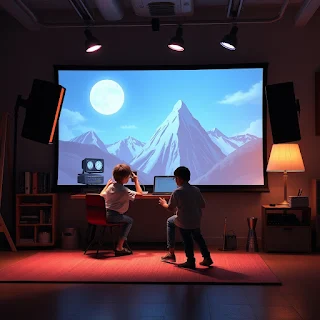Recommended Posts
- Get link
- X
- Other Apps
here's a breakdown of the best AI-powered tools for game development, categorized by what they help with. The field is rapidly evolving, so this is current as of late 2023/early 2024.
1. Asset Creation (Art, Textures, Models)
Leonardo.Ai: (https://leonardo.ai/) - Excellent for generating game assets like textures, concept art, and even 3D models (though 3D is still evolving). Strong community and lots of customization options. Good for stylized art.
Midjourney: (https://www.midjourney.com/) - Similar to Leonardo.Ai, but often produces more photorealistic results. Requires a Discord account. Great for inspiration and quick prototyping.
Stable Diffusion: (https://stablediffusionweb.com/) - Open-source image generation. Requires more technical setup but offers maximum control and customization. Lots of community-created models for specific art styles.
Scenario: (https://scenario.com/) - Specifically designed for generating game assets. Focuses on consistency and allows you to train the AI on your own art style.
Kaedim: (https://kaedim3d.com/) - Converts 2D images into 3D models. Useful for quickly creating basic 3D assets.
2. Code Generation & Assistance
GitHub Copilot: (https://github.com/features/copilot) - As mentioned before, incredibly useful for writing game code in languages like C#, C++, and Python (depending on your engine). Suggests code completions, generates functions, and can even write entire scripts based on comments.
Tabnine: (https://www.tabnine.com/) - Similar to Copilot, offering code completion and suggestions.
Mutable.ai: (https://mutable.ai/) - Can refactor and improve existing code, which is helpful for optimizing game performance.
3. Level Design & World Building
GAIA Pro: (https://www.gaia-pro.com/) - A procedural terrain and environment generation tool for Unity. Uses AI to create realistic landscapes, forests, and rivers.
Dungeon Architect: (https://www.dungeonarchitect.com/) - Procedurally generates dungeons and interiors for Unity and Unreal Engine. AI-powered rulesets allow for varied and interesting level designs.
Polybrush: (https://polybrush.net/) - A procedural modeling tool for creating game environments. Uses AI to assist with tasks like scattering objects and generating terrain features.
4. Animation & Motion Capture
Plask: (https://plask.ai/) - Turns video footage into 3D motion capture data. Useful for creating realistic character animations without expensive motion capture equipment.
Cascadeur: (https://cascadeur.com/) - Physics-based animation tool that uses AI to help create realistic and dynamic animations.
DeepMotion: (https://www.deepmotion.com/) - Another motion capture tool that uses AI to track movement from video.
5. AI Agents & NPC Behavior
Convai: (https://convai.io/) - Creates realistic and interactive AI characters for games. Uses large language models (LLMs) to enable natural language conversations.
Inworld AI: (https://www.inworld.ai/) - Similar to Convai, allowing you to create AI characters with complex personalities and behaviors.
Behavior Designer: (https://assetstore.unity.com/packages/tools/artificial-intelligence/behavior-designer-16088) - (Unity Asset) A visual scripting tool for creating AI behaviors. Can be combined with AI models for more advanced results.
Important Considerations:
AI is a Tool: These tools are meant to assist you, not replace you. You still need to have a good understanding of game development principles.
Quality Varies: The quality of the output from AI tools can vary. You'll often need to iterate and refine the results.
Cost: Many of these tools are subscription-based.
Engine Compatibility: Make sure the tool is compatible with your game engine (Unity, Unreal Engine, etc.).
Where to Start:
For beginners: Start with Leonardo.Ai or Midjourney for asset creation and GitHub Copilot for code assistance.
For level design: GAIA Pro is a great option for Unity.
For AI characters: Convai or Inworld AI are worth exploring.





Comments
Post a Comment